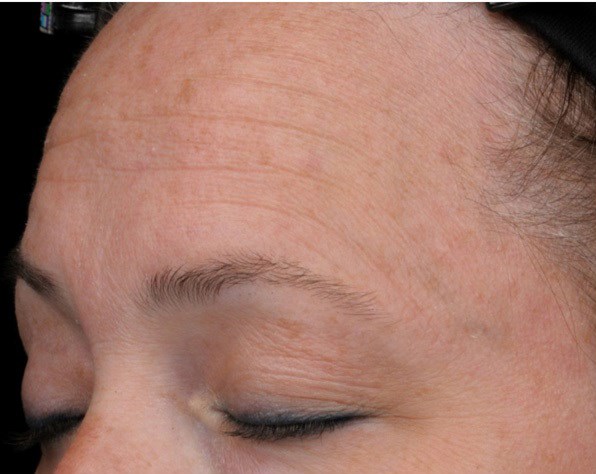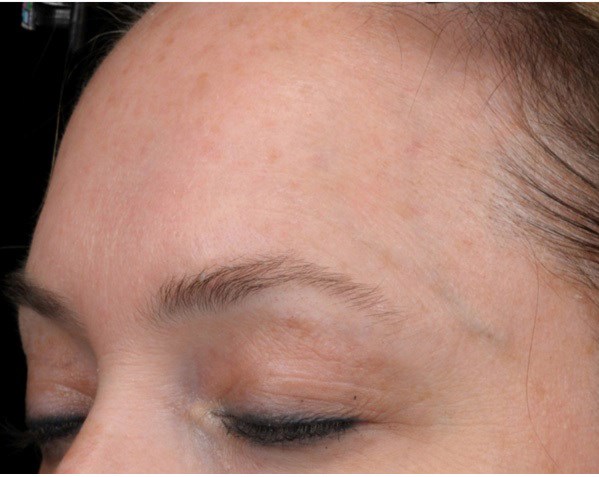The previous sections in this special focus (see Cosmeceuticals (part 2) and Skin anatomy and photoageing and Definitions, regulations and a review of the market) have covered skin anatomy, photoageing and cosmeceutical ingredients in detail. In this section I will review some of the cosmetic products (cosmeceuticals) that I use in my aesthetic dermatology practice.
As described in the cosmeceuticals section, choosing products is not as simple as compiling a shopping list of known ingredients with published data and putting them into a base solution. Stability and integrity of the ingredients in the combinations chosen and critically, suitable packaging to maintain the desired function of the ingredients is essential. In my search for effective skincare I have seen clinical data from ‘marketing pseudo-science’ through to genuine clinical data worthy of pharmaceutical-style scrutiny. Where marketing before and after images are taken from published clinical studies in peer reviewed medical journals, there is a degree of confidence that the products will deliver the promised results and patients will then return time and again.
My personal experience with products of this calibre is that when patients see genuine tangible changes to their skin, they are not only happy to tell their friends, but their friends will demand to know what they are doing, and are often very surprised to know the results are ‘merely’ from skincare products. This combination is powerful when looking at business development and seeing patient numbers grow – an ideal mix of long-term repeat business and new patient registrations.
Patients present in clinic with a wide variety of skin issues – from traditional dermatological conditions to everyday skincare needs. It is easy to focus on diseased skin or problem skin, however, in the knowledge that 94% of our patients are purchasing a moisturiser from somewhere [1], the understanding we have of effective skincare solutions puts us in pole position for ensuring they get skincare that delivers to their demands.
Introducing sales of skincare is a challenge in terms of how to introduce skincare when, for example, a patient has come in for a wrinkle treatment. However, clever and thoughtful product placement allows us now to use the retail brand products in clinical treatments – for example, using a professional size cleanser to remove makeup pre treatments and then a professional size SPF product post procedure. The ability to explain that “this professional product is available as a retail size for purchase in the clinic” takes away any reluctance to appear to be selling and allows me to focus on what are the best ingredients for my patients’ unique skin needs.
To illustrate my comments on clinically proven skincare I will briefly present one paper for a product range I use regularly with good clinical effect and great treatment response; and mention one poster presentation for a specific product.
Firstly, a study from the Journal of Drugs in Dermatology from December 2012 [2]. In this study a straightforward skincare regimen comprising a cleanser and eye cream both used twice a day, a day-time product with SPF and a night-time product was reviewed over 16 weeks. Interestingly, this was not a placebo controlled study, rather a vehicle-controlled method, the relevance of this in skincare cannot be underestimated – allowing true review of the actives in the specific formulations tested. The measures taken included visual grading and pinch recoil, skin thickness, silicone replicas in the crow’s feet area allowing accurate measurement of skin topography, digital photography and tolerability / safety.
The ingredients in the four products are a combination of alpha hydroxyacids, polyhydroxyacids, maltobionic acid, neoglucosamine, retinol, peptides and antioxidants, developed to the remit of providing anti-ageing benefits in all skin layers using multiple mechansims of action including broad-spectrum sunscreen protection. The aim of the treatment is to address both prevention and reduction of both the physiological changes of ageing skin and the visual signs of ageing skin.
Results showed significantly more improvement in the active group than the vehicle group on all parameters. Anti-ageing benefits were measured as early as two weeks and improvements continued through not only the 16 week point but on to the 30 week duration of the study. “These effects were clinically measurable and statistically significant over the effect of the cosmetic vehicles, demonstrating the value of benefit anti-ageing ingredients… The comprehensive benefits observed in this study over the vehicle control are believed to have been achieved through the synergistic actions of these ingredients across formulations in the regimen.” (Figure 1).


Figure 1: Before and after 16 weeks use of a four product regimen [2].
The poster presentation for multi-mechanism skincare that has caught my eye is ‘A Firming Neck Cream Containing N-Acetyl Glucosamine Significantly Improves Signs of Aging on the Challenging Neck and Décolletage’ by Dr Joel Schlessinger, a Board certified Dermatologic and Cosmetic Surgeon, as well as the president of LovelySkin.com. Voted as one of America’s Top Docs and Best Doctors in America, Schlessinger is also the President Emeritus of the American Society of Cosmetic Dermatology and Aesthetic Surgery [3]. The poster was presented at the 73rd Annual Meeting of the American Academy of Dermatology, San Francisco, CA, USA, 20-24 March 2015. The final sentence in the conclusion sums up the results: “A profound influence on the character of neck wrinkles was shown…using only the topical treatment.” My clinical experience has matched the clinical results (Figure 2).

Figure 2: Before, after eight weeks and after 16 weeks use of a multi mechanism product to improve the signs of ageing on the challenging neck and décolletage [3].
The outcome is patient satisfaction and compliance with long-term usage of the product.
Patient comments have included – “I didn’t think my neck matched my face, after just over three months of using this cream I want to buy a second pot, and I’m all matching – thank you” and “The photos you showed me made me doubt they were genuine, but look at my neck now.”
I also had one patient comment that they “felt the skin was smoother, less rough and they noted that there was less shadowing.”
In conclusion, in the melee of brands out there competing for consumer interest, we do have evidence-based skincare that works. As the experts, we should be using these clinically proven products to provide cost and results effective skincare to our patients to support the full range of aesthetic treatments that we offer.
References
1. Facial Skincare – US – May 2014. Mintel Store.
http://store.mintel.com/
facial-skincare-us-may-2014
Last accessed April 2016.
2. Farris PK, Edison BL, Brouda I, et al. A high-potency, multimechanism skin care regimen provides significant antiaging effects: results from a double-blind, vehicle-controlled clinical trial. J Drugs Dermatol 2012;11(12):1447-54.
3. Schlessinger J, Green B, Edison BL, et al. A firming neck cream containing n-acetyl glucosamine significantly improves signs of aging on the challenging neck and décolletage. Scientific Poster presented at the 73rd Annual Meeting of the American Academy of Dermatology, San Francisco, CA, USA; March 2015.
Acknowledgement
Images provided courtesy of NeoStrata Co. Inc.
Declaration of competing interests: None declared.
COMMENTS ARE WELCOME




